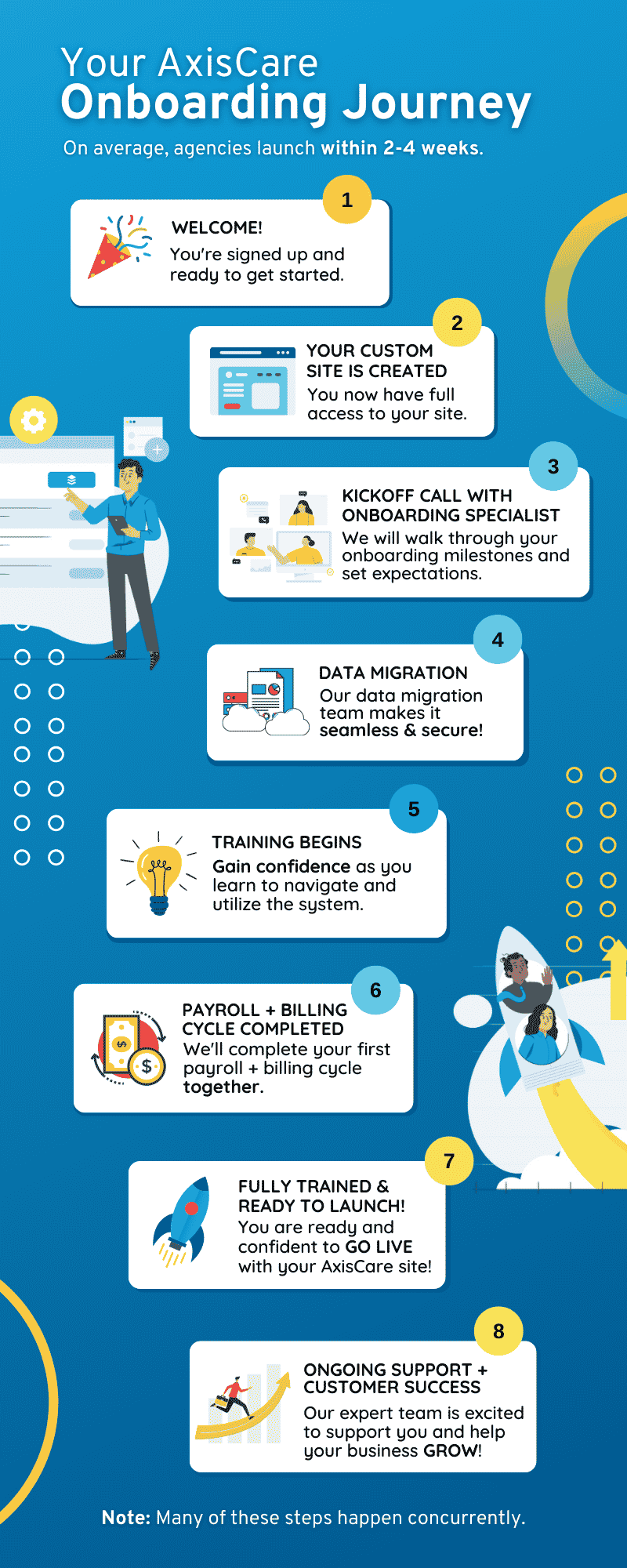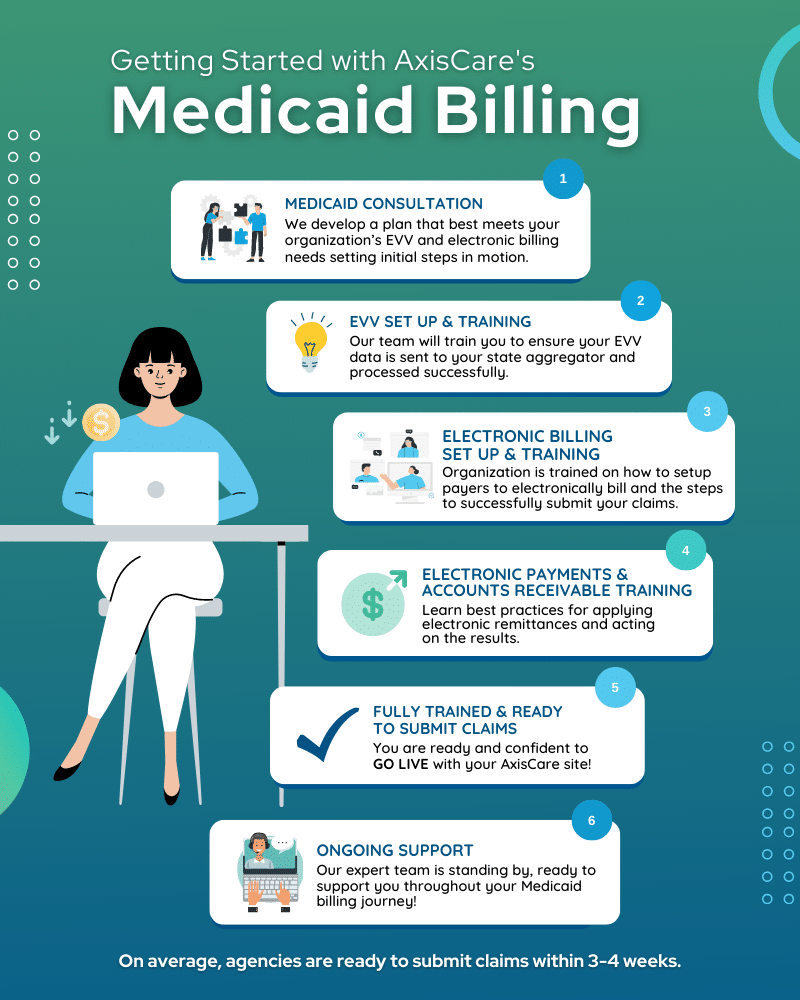In modern medical settings, patients are no longer in the passenger’s seat. Major social movements are unfolding that encourage patients to have a greater say in their care, chief among them being Person-Centered Care (PCC).
True to its name, PCC prioritizes individual needs over prescriptive solutions that feel cookie-cutter or impersonal. It strives to give patients as much autonomy and influence over their care as possible. Research has shown that engaged patients typically have better health outcomes. This is due in part to the fact that they have a hand in shaping their care plans and are, therefore, more likely to stick to a plan that reflects their needs and preferences.
In a home care setting, digital tools are the best way to stay connected with patients beyond the few hours a week that a caregiver is present. With the right home health care software, agencies can empower their clients to take ownership of their situation and thrive in numerous ways.
What is Digital Patient Engagement?
Digital patient engagement leverages online tools to maintain contact with practitioners and care staff. Some of the most commonly used tools include:
- Client and family portals
- Mobile applications for caregivers and in-office staff
- Telehealth platforms
- Remote monitoring sensors
All of these inputs help patients keep their care staff in the loop, whether it’s transmitting essential health updates or giving them a way to access their information whenever they need it.
The Impact of Digital Patient Engagement on Quality of Care
Including patients and families in the care process has a direct impact on the quality of care they receive. Better health outcomes occur when they have a say in shaping their care journey: participation builds trust between agencies, caregivers, and clients, creating a more collaborative and progress-oriented environment.
How Digital Patient Engagement Improves Patient Communications
In a given week, caregivers spend relatively little time at patients’ homes. That’s by design, of course – home care visits are meant to be quick and effective, allowing clients to live their lives more or less independently. However, in between appointments, there are many things that caregivers need to know about, and patients may want to access their records for a number of reasons.
Digital engagement pathways allow patients to transmit updates in the meantime, while care staff can keep tabs on their status and effectively respond to needs.
Personalizing Patient Care Plans
An agency’s goal should always be to personalize each care plan to the best of their abilities. There are certainly standard protocols that can be applied roster-wide for certain interventions, but the key to PCC – like we mentioned above – is catering to the individual.
3 Key Digital Patient Engagement Tools
Here’s how digital tools can pave the way towards better experiences and outcomes for all parties involved.
1. Patient Portals
Online portals give patients a place to access and update their health information 24/7. They can double-check their appointment calendar and view essential information from past visits, including services performed and which caregiver was present. This gives patients a greater sense of autonomy when it comes to managing their care and, therefore, a more empowered attitude overall.
2. Telehealth & Video Conferencing
Patients who have difficulties making it to an in-person clinic or hospital – usually due to mobility issues or living too far from a major city – face barriers to receiving the care they need. However, digital solutions like telehealth platforms and video conferencing are tools for accessibility, connecting clients to health care specialists from the comfort of home. Its role in home care has exploded in recent years and is only poised to continue on a growth trajectory as even more virtual tools become available.
It goes without saying that these digital tools immensely improve the quality of care patients receive simply by making it available to them; telehealth enables a fundamental ability to engage with doctors, specialists, and other care staff that were previously out of reach.
3. Digital Surveys & Feedback Tools
If agencies want to deliver top-tier care, they need to know firsthand what’s working and what’s not. Digital feedback tools create a direct line of communication with patients, inviting them to share their experiences and have a say in what comes next in their care journey.
The key is to use a centralized platform that proactively solicits input from patients and compiles it in a standard format, as opposed to collecting piecemeal information via caregiver notes. That way, agencies receive structured feedback that can guide their decision-making moving forward, both on a case-by-case basis and organization-wide.
How to Choose the Right Digital Patient Engagement Platform
When selecting a digital engagement platform, agencies should consider:
- How easily the provider can be onboarded and whether the user interface is intuitive for caregivers, regardless of their tech-savviness
- The ability of the platform to integrate with existing systems, such as EHRs and billing, to maximize its transformative potential
- The vendor’s customer support track record and availability of resources for both staff and patients, from initial training to ongoing support
Integrating Digital Patient Engagement With Existing Systems
Your chosen digital engagement platform must integrate with Electronic Health Records (EHR) to ensure a unified view of patient data across touchpoints. This will eliminate duplicate data entry, reduce errors, and give care teams the power to make data-driven decisions based on real-time, comprehensive patient information.
Why Digital Patient Engagement is the Future of Quality Care
Ready to get serious about digital patient engagement? Request a live demo with AxisCare and our team will walk you through everything you need to get started.









